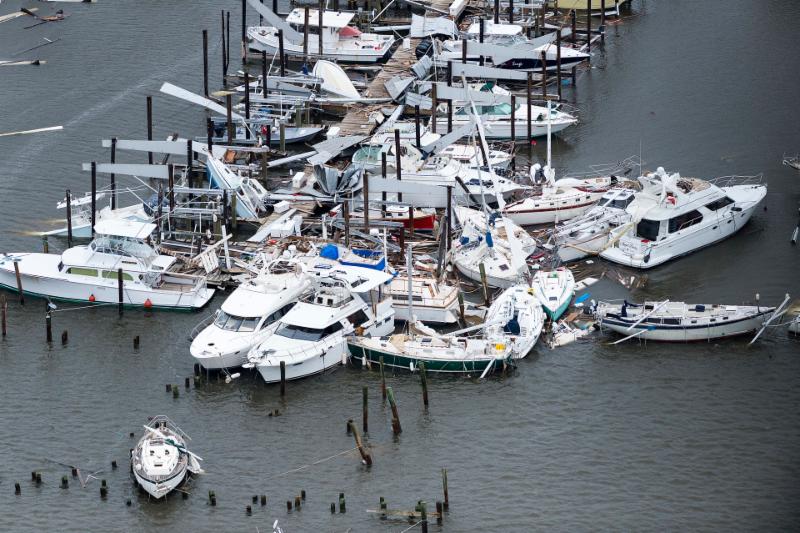The Texas General Land Office (GLO) kicked off the first round of the application process for nearly $1.2 billion in federal funding for mitigation projects in communities impacted by Hurricane Harvey and severe flooding in 2015 and 2016.
GLO officials are administrating the federal funds from the U.S. Department of Housing and Urban Development (HUD) Community Development Block Grant Mitigation (CDBG-MIT) program.

Hurricane Harvey damages in Rockport
Three competitive application programs will make $1 billion available for Hurricane Harvey mitigation projects, $147.68 million open to 2016 flooding mitigation projects, and $46.1 million for 2015 flooding mitigation projects.
Applications for mitigation projects will be evaluated and scored based on beneficial impact toward improving the resiliency of Texas communities, homes, businesses, and infrastructure from future storms, as well as other factors.
The Hurricane Harvey State Mitigation Competition will fund mitigation projects for Hurricane Harvey HUD- and state-designated Most Impacted and Distressed (MID) areas. The competition is open to cities, counties, councils of government, state entities, and special purpose districts. Examples of projects include flood control and drainage improvements, infrastructure improvements, green infrastructure, public facilities, and buyouts. Each proposed project must have a total proposed cost between $3 million to $100 million.
For the 2015 and 2016 Floods State Mitigation Competitions, each separate competition will provide funds to cities, counties, Indian tribes, and councils of governments to address risks in the 2015 and 2016 Floods HUD and State MID areas. Examples of projects include flood control and drainage improvements, infrastructure improvements, green infrastructure, public facilities, and buyouts. Each proposed project must have a total proposed cost between $3 million to $10 million.
HUD defines mitigation as activities that increase resilience to disasters and reduce or eliminate the long-term risk of loss of life, injury, damage to and loss of property, and suffering and hardship, by lessening the impact of future disasters.
Ultimately, more than $2.3 billion will be available to the affected communities through the state’s CDBG-MIT action plan.
